By AFP
PublishedSeptember 9, 2023

Patricia Herrera visits the basement of the Chilean presidential palace where she was tortured 50 years ago -
AFP GABRIEL BOUYS
Magdalena ADVIS
In the basement of the presidential palace in Chile’s capital, Patricia Herrera was detained and tortured for months before being sent into exile. It was early in a military dictatorship that would kill or cause the disappearance of thousands of people.
Fifty years after the US-backed coup that snuffed out Chile’s democracy, the wounds from all that suffering are still raw.
– Torment –
As she returned from class at the university, Herrera was detained by officers in plain clothes because she was “a woman and a socialist.” She was 19.
Herrera was taken, blindfolded, to the basement of La Moneda, as the presidential palace is called. It was then also known as “El Hoyo,” or the pit, as it was one of the first detention and torture centers set up by General Augusto Pinochet’s new regime after the ouster of Socialist president Salvador Allende on September 11, 1973.

“From the very first night we got there, there was sexual humiliation. At first I thought it was just the guard who was overdoing it with me. I did not think it was an established thing that women had to suffer sexual, in addition to political, violence,” said Herrera, now 68 and a historian.
Herrera was held for 14 months at the palace and in two other buildings in Santiago that were converted into torture centers by the Pinochet regime. She was then sent into an exile that would last 15 years, first in France and then in Cuba.
Two commissions created to study the dictatorship concluded that at least 38,254 people were tortured under the Pinochet regime, which lasted until 1990.
The basement in the presidential palace where Herrera was held was also known as Cuartel, or barracks, N°1 and is now used as office space. People taken there blindfolded could identify it because of its curved wall.
On August 30 of this year, the current president, Gabriel Boric, had a plaque installed in the basement space to mark the horrors endured by around 30 people who were held there.
“We want to put up a marker for everyone to see,” Herrera said, “that here, in the political heart of the nation, there was a torture center.”
– Disappearance –
Agents of the dictatorship killed 1,747 people, and detained and made another 1,469 disappear, according to an official government tally.
While 307 of the disappeared have since been identified, the other 1,162 remain missing. Fifty years later, their families still wonder where they are.
In 1974, when Pinochet’s police detained a man named Luis Mahuida — a 23-year-old university student active in leftist politics and the father of two young daughters — they also brought an abrupt end to the childhood of his sister Marialina Gonzalez, who was then nine years old.
Their mother, Elsa Esquivel, spent all her time looking for her son; it was a full-time occupation. Marialina Gonzalez looked after her brother’s daughters, who were three and 11 months old when he vanished. “I stopped playing with dolls. My nieces were dolls for me,” said Gonzalez.
She never finished her education. She went to hundreds of places asking for her brother. Gonzalez even staged a hunger strike and recalls being arrested several times while taking part in protest marches in honor of missing people.
She regrets the childhood she never had. “I was not capable of saying: ‘Stop, let me be. I want to go out dancing. I want to have friends.’ I kept quiet,” she said.
Now 59, she dedicates herself to caring for her elderly mother and expects to carry suffering with her into her own old age. “There is no closure just because my brother is still missing. There will be no closure.”

– Exile –
The dictatorship triggered the biggest migratory movement in Chilean history. Just over 200,000 people went into exile, according to the non-governmental Chilean Human Rights Commission.
Employees of the Allende government, union leaders, workers, students and farmers left the country, taking their families with them. Sweden, Mexico, Argentina, France and Venezuela were the main recipient countries.
Most of the exiles were able to return home starting September 1, 1988, when the regime issued a decree allowing them back, a year and a half before the dictatorship ended.
A communist activist named Shaira Sepulveda was tortured in secret prisons called Villa Grimaldi and Cuatro Alamos. After her release she left in 1976 for France, along with her husband at that time. She left relatives and friends in Santiago.
“My family was here, my sister, my parents. But what really hurt was having to go to a country where you are a nobody,” Sepulveda recalls.
She returned to Chile 17 years later with two children, but again her family was broken apart. The eldest child could not adapt to life in Chile and returned to Europe.
“I am an old woman, so my grandchildren there will barely know me,” said Sepulveda, who is 74.
Magdalena ADVIS
In the basement of the presidential palace in Chile’s capital, Patricia Herrera was detained and tortured for months before being sent into exile. It was early in a military dictatorship that would kill or cause the disappearance of thousands of people.
Fifty years after the US-backed coup that snuffed out Chile’s democracy, the wounds from all that suffering are still raw.
– Torment –
As she returned from class at the university, Herrera was detained by officers in plain clothes because she was “a woman and a socialist.” She was 19.
Herrera was taken, blindfolded, to the basement of La Moneda, as the presidential palace is called. It was then also known as “El Hoyo,” or the pit, as it was one of the first detention and torture centers set up by General Augusto Pinochet’s new regime after the ouster of Socialist president Salvador Allende on September 11, 1973.

“From the very first night we got there, there was sexual humiliation. At first I thought it was just the guard who was overdoing it with me. I did not think it was an established thing that women had to suffer sexual, in addition to political, violence,” said Herrera, now 68 and a historian.
Herrera was held for 14 months at the palace and in two other buildings in Santiago that were converted into torture centers by the Pinochet regime. She was then sent into an exile that would last 15 years, first in France and then in Cuba.
Two commissions created to study the dictatorship concluded that at least 38,254 people were tortured under the Pinochet regime, which lasted until 1990.
The basement in the presidential palace where Herrera was held was also known as Cuartel, or barracks, N°1 and is now used as office space. People taken there blindfolded could identify it because of its curved wall.
On August 30 of this year, the current president, Gabriel Boric, had a plaque installed in the basement space to mark the horrors endured by around 30 people who were held there.
“We want to put up a marker for everyone to see,” Herrera said, “that here, in the political heart of the nation, there was a torture center.”
Allende committed suicide rather than be captured.
– Disappearance –
Agents of the dictatorship killed 1,747 people, and detained and made another 1,469 disappear, according to an official government tally.
While 307 of the disappeared have since been identified, the other 1,162 remain missing. Fifty years later, their families still wonder where they are.
In 1974, when Pinochet’s police detained a man named Luis Mahuida — a 23-year-old university student active in leftist politics and the father of two young daughters — they also brought an abrupt end to the childhood of his sister Marialina Gonzalez, who was then nine years old.
Their mother, Elsa Esquivel, spent all her time looking for her son; it was a full-time occupation. Marialina Gonzalez looked after her brother’s daughters, who were three and 11 months old when he vanished. “I stopped playing with dolls. My nieces were dolls for me,” said Gonzalez.
She never finished her education. She went to hundreds of places asking for her brother. Gonzalez even staged a hunger strike and recalls being arrested several times while taking part in protest marches in honor of missing people.
She regrets the childhood she never had. “I was not capable of saying: ‘Stop, let me be. I want to go out dancing. I want to have friends.’ I kept quiet,” she said.
Now 59, she dedicates herself to caring for her elderly mother and expects to carry suffering with her into her own old age. “There is no closure just because my brother is still missing. There will be no closure.”

– Exile –
The dictatorship triggered the biggest migratory movement in Chilean history. Just over 200,000 people went into exile, according to the non-governmental Chilean Human Rights Commission.
Employees of the Allende government, union leaders, workers, students and farmers left the country, taking their families with them. Sweden, Mexico, Argentina, France and Venezuela were the main recipient countries.
Most of the exiles were able to return home starting September 1, 1988, when the regime issued a decree allowing them back, a year and a half before the dictatorship ended.
A communist activist named Shaira Sepulveda was tortured in secret prisons called Villa Grimaldi and Cuatro Alamos. After her release she left in 1976 for France, along with her husband at that time. She left relatives and friends in Santiago.
“My family was here, my sister, my parents. But what really hurt was having to go to a country where you are a nobody,” Sepulveda recalls.
She returned to Chile 17 years later with two children, but again her family was broken apart. The eldest child could not adapt to life in Chile and returned to Europe.
“I am an old woman, so my grandchildren there will barely know me,” said Sepulveda, who is 74.
Pinochet: Images of a dictatorship
Emilia Rojas-Sasse
13 hours ago13 hours ago
Fifty years after the military coup in Chile, historians describe why Augusto Pinochet's coup had such a huge impact in Europe. A major factor was the power of images.
https://p.dw.com/p/4VwHv
Media coverage of the 1973 coup, including this picture of General Augusto Pinochet, was seen around the world
Image: AFP/epa/dpa/picture-alliance
Everyone knows the image of Che Guevara, his steely gaze directed confidently into the distance. In the counterculture of the 1960s, the "Comandante" emerged as a symbol of the idealistic revolutionary and long remained an icon of youth culture.
The photo of Augusto Pinochet, on the other hand, embodies the dictator par excellence. The general who violently overthrew Salvador Allende's government in Chile on September 11, 1973, was commonly regarded as the ultimate evil. But why, compared to other Latin American dictators, Pinochet in particular?
Coup caught on camera (& TV)
While the coup d'etat in Chile shocked the world, the 1964 coup in Brazil went relatively under the radar.
The spotlight on the Chile coup was due in large part to the widespread media presence in the country, noted Caroline Moine, professor of political and cultural history at the University of Versailles Saint-Quentin-en-Yvelines in France.
"This coup d'etat did not take place in the middle of the night and in secret, but in front of running cameras," she told DW of the events of 1973. "There were many journalists there, so the images flickered quickly across the screens, even abroad."
This was probably in the interests of the putschists, she said.
"The military wanted people to see what had happened. They wanted to impress not only their opponents, but also their supporters inside and outside the country," she said.
Through media coverage, the scenes were burned into the collective memory. The images of the bombing of the presidential palace, La Moneda, went around the world — as did the photo of the usurper Pinochet in uniform, with dark glasses and an expressionless face, sitting in front of his men.
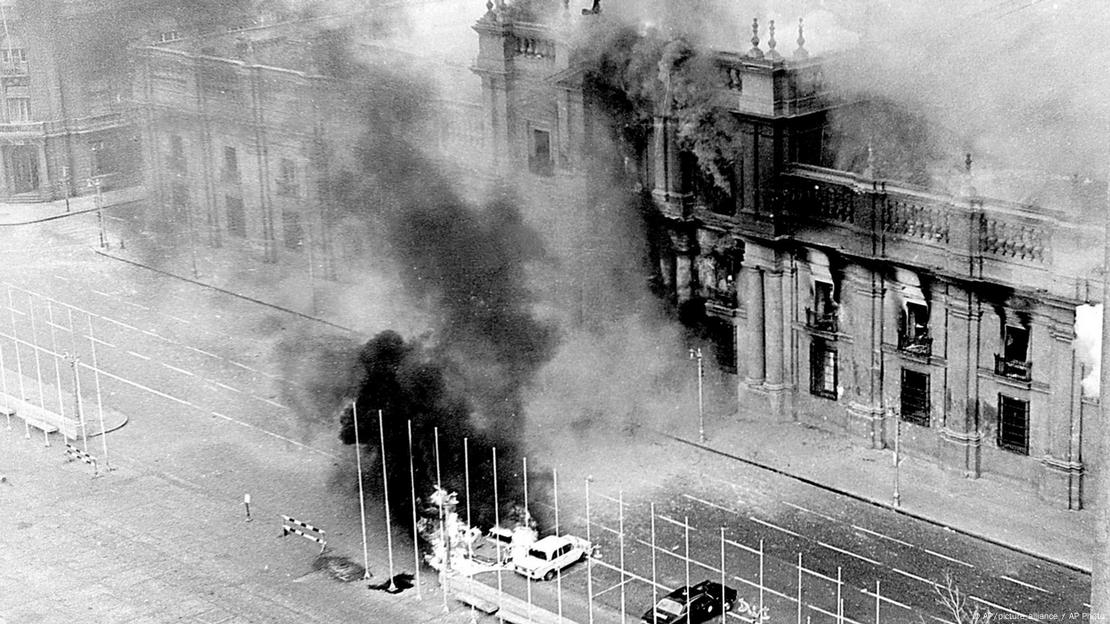
The government palace in Santiago de Chile was attacked in 1973, and seen on TV
Image: AP/picture alliance / AP Photo
For Joan del Alcazar, professor of contemporary history at the University of Valencia, the image of this dictator was projected in stark contrast to overthrown president, doctor Salvador Allende.
"The figure of a friendly, empathetic doctor, an undeniably attractive man, contrasts with the odious image of an unpleasant, authoritarian, despotic and, moreover, criminal military man," he told DW.
Allende a fallen symbolic figure of left-wing intellectuals
When viewed against the backdrop of the Cold War, events in Chile transcended national borders.
"In West Germany and in Europe, Allende was an important symbolic figure because he represented the democratic path to socialism; he was a very strong symbolic figure for many left-wing intellectuals," said Lasse Lassen, a historian and researcher at the University of Würzburg.
"When he was overthrown, especially in such a brutal way — with the bombing of the government palace and his suicide — he became a shining beacon for the left in Western Europe. And Pinochet embodied the image of the enemy."
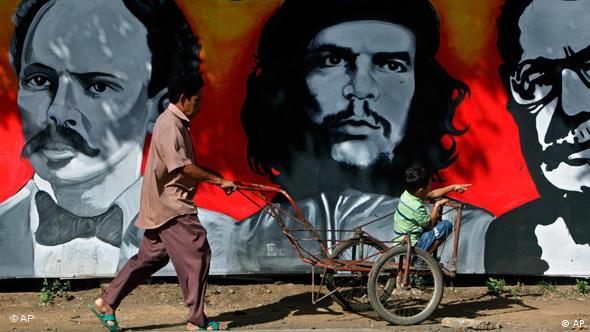
For Joan del Alcazar, professor of contemporary history at the University of Valencia, the image of this dictator was projected in stark contrast to overthrown president, doctor Salvador Allende.
"The figure of a friendly, empathetic doctor, an undeniably attractive man, contrasts with the odious image of an unpleasant, authoritarian, despotic and, moreover, criminal military man," he told DW.
Allende a fallen symbolic figure of left-wing intellectuals
When viewed against the backdrop of the Cold War, events in Chile transcended national borders.
"In West Germany and in Europe, Allende was an important symbolic figure because he represented the democratic path to socialism; he was a very strong symbolic figure for many left-wing intellectuals," said Lasse Lassen, a historian and researcher at the University of Würzburg.
"When he was overthrown, especially in such a brutal way — with the bombing of the government palace and his suicide — he became a shining beacon for the left in Western Europe. And Pinochet embodied the image of the enemy."

Legends of socialist struggle — Ernesto 'Che' Guevara, center, Chilean late President Salvador Allende, right, and Cuban independence hero Jose Marti, left — have been remembered in art
Image: AP
At the time in Europe, the left was divided, said Caroline Moine.
"There were attempts, for example in France and Italy, to unite communist and socialist forces" in the same way as the Unidad Popular, an electoral alliance of leftist Chilean parties led by Allende.
"The coup put an end to that project and destroyed those hopes," she said. Nevertheless, the communist party in particular, but also the socialist party in Chile, very quickly launched a major international campaign after Pinochet's coup.
This not only stylized Pinochet as the embodiment of evil, but also glorified the ousted president.
"Allende was the one who wanted to defend democracy in Chile and died for it. In Europe, too, the idea of heroes who are willing to die for their ideas is highly emotionally charged," said the French historian.
At the time in Europe, the left was divided, said Caroline Moine.
"There were attempts, for example in France and Italy, to unite communist and socialist forces" in the same way as the Unidad Popular, an electoral alliance of leftist Chilean parties led by Allende.
"The coup put an end to that project and destroyed those hopes," she said. Nevertheless, the communist party in particular, but also the socialist party in Chile, very quickly launched a major international campaign after Pinochet's coup.
This not only stylized Pinochet as the embodiment of evil, but also glorified the ousted president.
"Allende was the one who wanted to defend democracy in Chile and died for it. In Europe, too, the idea of heroes who are willing to die for their ideas is highly emotionally charged," said the French historian.
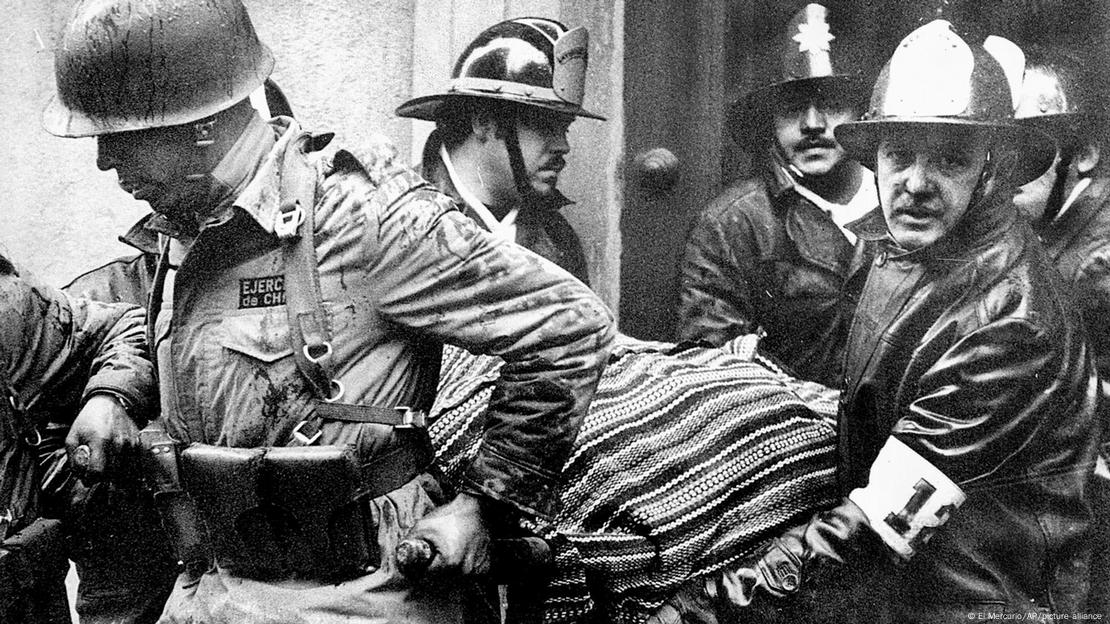
The body of Salvador Allende was carried away after his death on September 11, 1973, along with hope for a democratic Chile
Image: El Mercurio/AP/picture alliance
Yet, she added, the various parties within the Unidad Popular were not always so united.
"It was always said that the UP was a victim of the dictatorship; there was never any public talk of internal tensions. There was a kind of myth."
Brutal repression shocked the world
The extreme brutality on the part of the coup plotters in Chile shocked more than just members of the political left.
Similar repression was being imposed by other dictatorships in the region, including in Argentina, Paraguay and Uruguay during the so-called Operation Condor camapaigns.
"[Nonetheless] this military coup stands out for its cruelty, its extreme viciousness," said Joan del Alcazar.
Historian Lassen believes knowledge of human rights abuses in Chile and simultaneous Cold War tensions in the West contributed to the coup in Chile being particularly present in people's minds.
Ultimately, however, "neither Franco nor Pinochet were condemned as Hitler was, not even in their own country," he added. "It's a complex process."
This article was originally written in Spanish.
Yet, she added, the various parties within the Unidad Popular were not always so united.
"It was always said that the UP was a victim of the dictatorship; there was never any public talk of internal tensions. There was a kind of myth."
Brutal repression shocked the world
The extreme brutality on the part of the coup plotters in Chile shocked more than just members of the political left.
Similar repression was being imposed by other dictatorships in the region, including in Argentina, Paraguay and Uruguay during the so-called Operation Condor camapaigns.
"[Nonetheless] this military coup stands out for its cruelty, its extreme viciousness," said Joan del Alcazar.
Historian Lassen believes knowledge of human rights abuses in Chile and simultaneous Cold War tensions in the West contributed to the coup in Chile being particularly present in people's minds.
Ultimately, however, "neither Franco nor Pinochet were condemned as Hitler was, not even in their own country," he added. "It's a complex process."
This article was originally written in Spanish.
Artists After the Escape: Chile's coup, dictatorship and the path to democracy
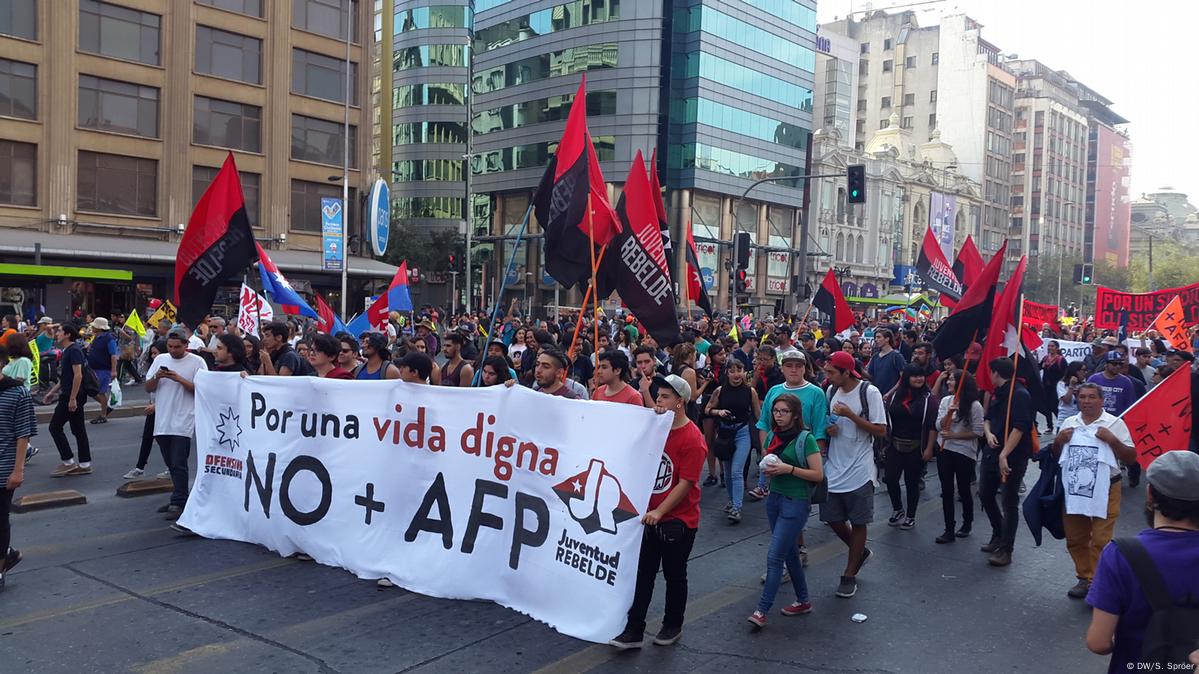
Chile's September 11
September 11, 1973, changed the lives of many Chileans forever. General Augusto Pinochet, commander in chief of the Chilean army, overthrew the incumbent socialist president, Salvador Allende. The military bombarded the presidential palace "La Moneda" in the capital Santiago, arrested government supporters, leftists and Pinochet opponents.
DW
13 images
September 11, 1973 changed the lives of many Chileans forever. A coup against President Allende brought Augusto Pinochet to power. Sixteen years later, a spectacular campaign toppled the dictator.Image: DW/S. Spröer
13 images
September 11, 1973 changed the lives of many Chileans forever. A coup against President Allende brought Augusto Pinochet to power. Sixteen years later, a spectacular campaign toppled the dictator.Image: DW/S. Spröer

Chile's September 11
September 11, 1973, changed the lives of many Chileans forever. General Augusto Pinochet, commander in chief of the Chilean army, overthrew the incumbent socialist president, Salvador Allende. The military bombarded the presidential palace "La Moneda" in the capital Santiago, arrested government supporters, leftists and Pinochet opponents.
OFF/AFP/Getty Images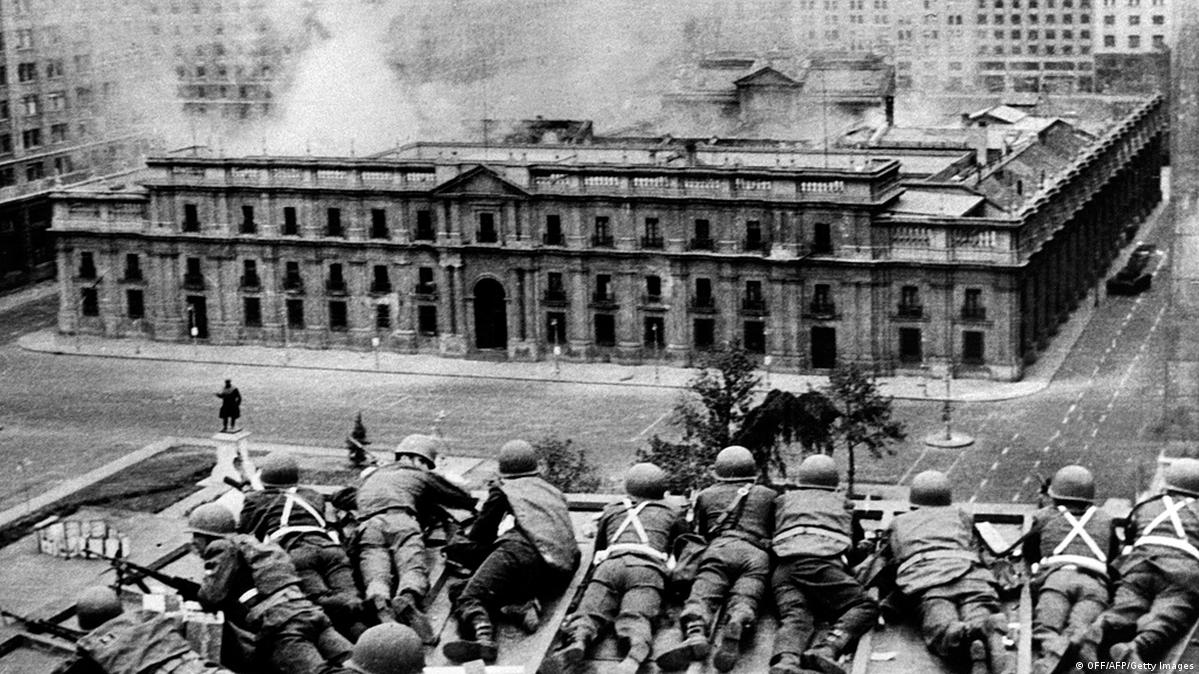
Salvador Allende, a people's president
The socialist president had only been in office for three years before the coup. After having nationalized companies and dispossessed great land owners, his government faced massive opposition. The US didn't approve of the socialist leader in South America either. With the help of the CIA, Washington boycotted Allende's economic policies and incited Chile's media against the government.

Salvador Allende, a people's president
The socialist president had only been in office for three years before the coup. After having nationalized companies and dispossessed great land owners, his government faced massive opposition. The US didn't approve of the socialist leader in South America either. With the help of the CIA, Washington boycotted Allende's economic policies and incited Chile's media against the government.
Image: picture-alliance/dp
Chile begins probing 'disappearances' during Pinochet regime
August 31, 2023
A process has begun to try and determine what happened to those who disappeared during dictator Augusto Pinochet's brutal regime 50 years ago.
A legacy of abuse
Pinochet seized power in a bloody coup backed by the US on September 11, 1973 and would remain in power until 1990.
During his dictatorship, some 40,175 people were executed, detained and disappeared, or tortured as political prisoners, according to Chile's Ministry of Justice.
Government reports show 1,469 people were victims of forced disappearances, of whom 1,092 were secretly detained and 377 were executed.
Their remains were never returned to families.
Pinochet died in 2006 at the age of 91, and was never convicted for his role in the crimes. Many have been pushing the government for more answers and accountability.
Project to uncover truth, a government first
Until now, the circumstances of those who were declared missing has not been looked into, the weight only carried by bereaved loved ones.
The project, officially known as Truth and Justice, will have a dedicated budget and staff, with investigators tasked with reconstructing the victims' final days.
Earlier this week, the US State Department declassified briefings presented to Richard Nixon, the US president at the time, on September 8 and September 11.
The reports show how we was briefed on Chile's impending coup which was part of the wave of military dictatorships in the region in the 1970s.
In Argentina, Brazil and Uruguay, families have also pushed for more information on those who were declared missing during military regimes.
rm/kb (Reuters,
August 31, 2023
A process has begun to try and determine what happened to those who disappeared during dictator Augusto Pinochet's brutal regime 50 years ago.
Relatives of victims at a march commemorating the victims of Augusto Pinochet's regime
Image: Martin Bernetti/AFP
Chile's government launched a program on Wednesday which seeks to determine what happened to more than 1,000 people during Augusto Pinochet's dictatorship 50 years ago.
"Justice has taken too long," President Gabriel Boric said as he announced the government project at the presidential palace.
"The only way to build a future that is more free and respectful of life and human dignity is to know the whole truth," he said.
Chile's government launched a program on Wednesday which seeks to determine what happened to more than 1,000 people during Augusto Pinochet's dictatorship 50 years ago.
"Justice has taken too long," President Gabriel Boric said as he announced the government project at the presidential palace.
"The only way to build a future that is more free and respectful of life and human dignity is to know the whole truth," he said.
A legacy of abuse
Pinochet seized power in a bloody coup backed by the US on September 11, 1973 and would remain in power until 1990.
During his dictatorship, some 40,175 people were executed, detained and disappeared, or tortured as political prisoners, according to Chile's Ministry of Justice.
Government reports show 1,469 people were victims of forced disappearances, of whom 1,092 were secretly detained and 377 were executed.
Their remains were never returned to families.
Pinochet died in 2006 at the age of 91, and was never convicted for his role in the crimes. Many have been pushing the government for more answers and accountability.
Project to uncover truth, a government first
Until now, the circumstances of those who were declared missing has not been looked into, the weight only carried by bereaved loved ones.
The project, officially known as Truth and Justice, will have a dedicated budget and staff, with investigators tasked with reconstructing the victims' final days.
Earlier this week, the US State Department declassified briefings presented to Richard Nixon, the US president at the time, on September 8 and September 11.
The reports show how we was briefed on Chile's impending coup which was part of the wave of military dictatorships in the region in the 1970s.
In Argentina, Brazil and Uruguay, families have also pushed for more information on those who were declared missing during military regimes.
rm/kb (Reuters,
Child victims are the forgotten voices of Chile during the Pinochet dictatorship from 1973 to 1990
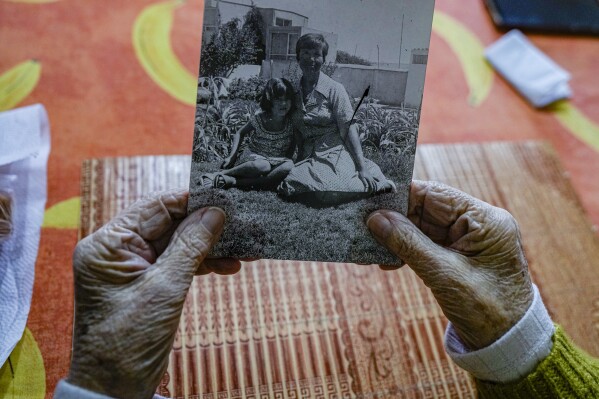
Eliana Rodríguez holds a photograph of herself with her daughter Yelena Monroy at home in La Serena, Chile, Friday, Sept. 1, 2023. The photograph was taken one year after they were released from a detention center where Rodriguez and her two young daughters were imprisoned for over a year during the dictatorship of Gen. Augusto Pinochet, who was brought to power in Chile after a military coup in September 1973.
Eliana Rodríguez holds a photograph of herself with her daughter Yelena Monroy at home in La Serena, Chile, Friday, Sept. 1, 2023. The photograph was taken one year after they were released from a detention center where Rodriguez and her two young daughters were imprisoned for over a year during the dictatorship of Gen. Augusto Pinochet, who was brought to power in Chile after a military coup in September 1973.
(AP Photo/Esteban Felix)

Yelena Monroy poses for portrait by photos of detainees who disappeared during the dictatorship Gen. Augusto Pinochet in La Serena, Chile, Friday, Sept. 1, 2023. Monroy was 3-years-old when she was imprisoned for more than a year along with her younger sister Natacha and her mother Eliana Rodriguez, a socialist activist persecuted by the regime Pinochet, who was brought to power in Chile after a military coup in September 1973. (AP Photo/Esteban Felix)
BY EVA VERGARA
September 8, 2023
SANTIAGO, Chile (AP) — Yelena Monroy was 3 years old when she was imprisoned for more than a year along with her younger sister and her mother, a socialist activist targeted by the regime of Gen. Augusto Pinochet after he came to power in Chile in a military coup in September 1973.
“We were scared, we were crying,” recalled Monroy, now a 53-year-old commercial engineer and one of more than 1,000 children and adolescents who were detained in the name of fighting communism and leftist guerrillas during Chile’s military dictatorship from 1973 to 1990.

Eliana Rodriguez adjusts her glasses as her daughter Yelena Monroy searches through a photo album at Rodriguez’s home in La Serena, Chile, Friday, Sept. 1, 2023. Rodriguez and her two young daughters were imprisoned during the dictatorship of Gen. Augusto Pinochet, who was brought to power in Chile after a military coup in September 1973. (AP Photo/Esteban Felix)

Photographed through a plastic window, an entrance leads to the center of “El Buen Pastor,” or The Good Shepherd, originally built to hold detained, female minors and run by Catholic nuns, that was turned into a detention center for political prisoners during the dictatorship of Gen. Augusto Pinochet, in La Serena, Chile, Friday, Sept. 1, 2023. Yelena Monroy was incarcerated here for more than a year when she was only three-years-old with her mother Eliana Rodriguez and younger sister Natacha. (AP Photo/Esteban Felix)

Yelena Monroy shows a 1973 photograph of her mother Eliana Rodriguez, bottom left, sitting with other political prisoners during the dictatorship of Gen. Augusto Pinochet at “El Buen Pastor” or The Good Shepherd detention center, originally built to hold detained, female minors and run by Catholic nuns that was turned into a detention center for political prisoners during Gen. Augusto Pinochet’s dictatorship, in La Serena, Chile, Friday, Sept. 1, 2023. Monroy was incarcerated here with her mother and younger sister for more than a year. The 1973 photo is from a visit by the International Red Cross to verify detainees’ condition. (AP Photo/Esteban Felix)
When Pinochet installed himself as leader, the age of majority in Chile was set at 21 years. But being a minor was no protection from the dictatorship’s crackdown. Children were detained, tortured, killed, and even used as decoys to apprehend their parents.
The trauma of that period has made many of the young victims of the military regime reluctant to speak out, and the process of prosecuting that era’s crimes and making reparations generally has made no distinction among victims based on age. So, the child victims of the Pinochet era have not had much visibility, though minors represent nearly 10% of the deaths attributed to the regime.
OTHER NEWS
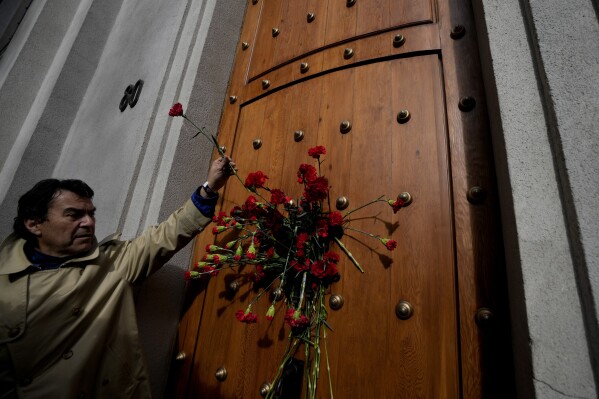
Chile president defends democracy 50 years after coup ushered in brutal military dictatorship
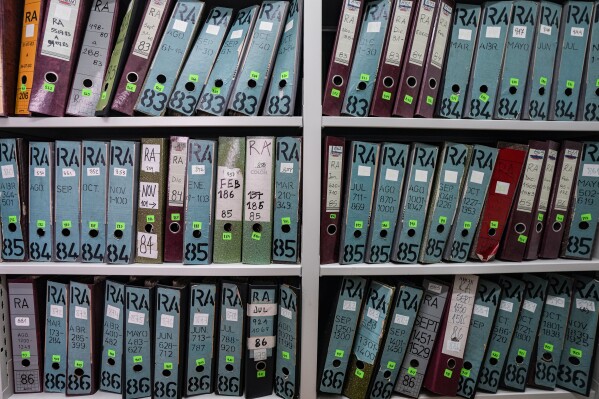
The Catholic Church defended human rights during Chile’s dictatorship. An archive tells the story
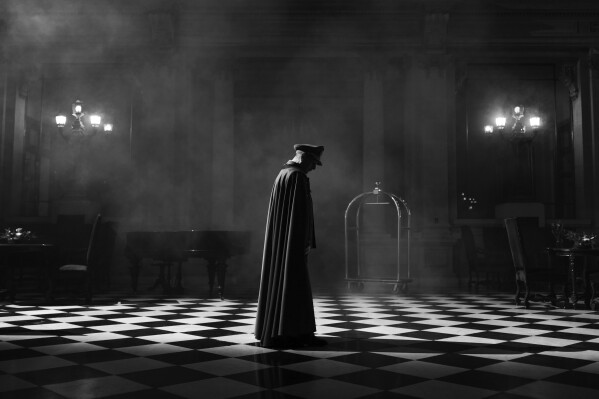
Movie Review: Pinochet as a vampire in surreal, frightening ‘El Conde’
“We don’t classify them by age, because they all suffered,” Gaby Rivera, president of Chile’s Association of Relatives of the Detained-Disappeared, told The Associated Press.
However, the National Commission on Political Imprisonment and Torture figures show that the Pinochet regime detained 1,132 minors under the age of 18. Of these 88 were under 13 and 102 were arrested along with their parents — or were born in prison.
Some 307 children under the age of 18 were killed during that period, according to human rights groups’ reviews of documentation from the National Truth and Reconciliation Commission. About 3,200 people overall were killed during the dictatorship, or went missing and are believed dead.
Chile’s National Stadium, in the country’s capital, became the largest detention center of the military government. That is where they arrested — and beat — Roberto Vásquez Llantén, when he was 17, for being an active militant of the Revolutionary Left Movement.
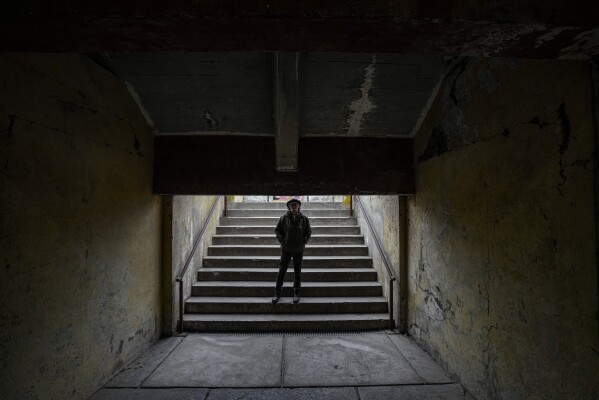
Roberto Vásquez Llantén, 67, poses for a portrait on the stairs that leads to a tunnel at the National Stadium where he was held during the dictatorship in Santiago, Chile, Saturday, Sept. 2, 2023. (AP Photo/Esteban Felix)

View of the women´s dressing room of the National Stadium, which was used as a prison and place of torture during the coup orchestrated by Gen. Augusto Pinochet, Santiago, Chile, Saturday, Sept. 2, 2023. (AP Photo/Esteban Felix)
He had been in hiding since the start of the coup, but was arrested on Jan. 15, 1974. Vásquez Llantén, who is 67 today, spent a year in the Chacabuco Prison Camp in the Atacama desert along with 16 other minors. There was no electricity or hot water, he recalled. There were antipersonnel mines outside the barbed-wire to keep prisoners in line, while guards kept watch from towers.
If minors had political significance, they were detained just like adults. But they also were used as lures to trap and detain their parents.
The Fernández Montenegro sisters were imprisoned in February 1974 when they were teenagers.
Viviana, 14, and Morelia, 17, were accused of being guerrillas in the Chilean port of Valparaíso where they lived, some 120 kilometers (75 miles) northwest of the capital. Their mother was arrested and released after 24 hours. The whole family, with the exception of the father, were active communists.
The sisters were first held together in the Silva Palma Navy Barracks, on one of the many inhabited hills of Valparaíso.
“I was in a cell, wearing a hoodie, while some guys put electricity cables on my fingers, yelling and screaming profanities and threats,” demanding to know where the weapons were, Viviana Fernández recounted.
“The only thing I did was cry and cry ... I felt very afraid, very afraid,” she said.
Fernández, who is 64 today, and Yelena Monroy are members of the Association of Former Minors Victims of Political Imprisonment and Torture, created nine years ago in part to raise awareness about the fate of children and adolescents under the dictatorship.
Fernández, who is the spokesperson, says the organization has about 100 members, but she thinks there are many more, and that many are still afraid to talk about what happened to them during those years.
Many other minors of that time did not survive to tell their story.
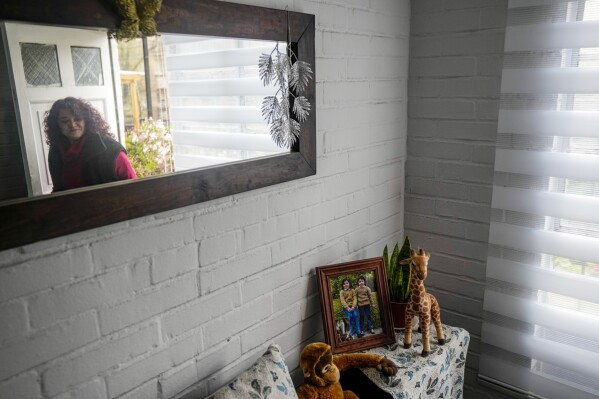
Cecilia Aguilar is reflected in the mirror at home where a photo of her with her then 6-year-old sister Alicia stands in Santiago, Chile, Wednesday, Sept. 6, 2023. Her sister was assassinated on Sept. 18, 1973, the day their portrait was taken, by soldiers who arrived shooting into a public square in the Yungay neighborhood where they played during Gen. Augusto Pinochet’s dictatorship. Cecilia said she was saved because she ran, but later was found by a soldier who applied “the escape law,” telling her to run as he counted to 30. “If I catch you, I’ll shoot you and kill you,” she recalled him saying. (AP Photo/Esteban Felix)
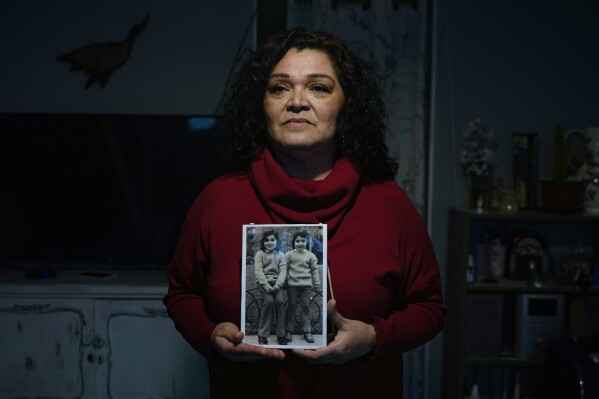
Cecilia Aguilar holds a photo of herself with her then 6-year-old sister Alicia in Santiago, Chile, Wednesday, Sept. 6, 2023. Cecilia’s sister was assassinated on Sept. 18, 1973, the day their portrait was taken, by soldiers who arrived shooting into a public square in the Yungay neighborhood where they played, during Gen. Augusto Pinochet’s dictatorship. Cecilia said she was saved because she ran, but later was found by a soldier who applied “the escape law,” telling her to run as he counted to 30. “If I catch you, I’ll shoot you and kill you,” she recalled him saying. (AP Photo/Esteban Felix)
José Gregorio Saavedra González, a militant of the Revolutionary Left Movement, was executed at the age of 18 by soldiers in Calama, in the north of the country, together with 25 other political prisoners on Oct. 19, 1973. He was one of the disappeared who years later were located — and identified.
“They gave us a little bit of a finger in a small box, and a little bit of what I imagine was a small tooth,” recalls his sister, Ángela Saavedra, who is 81.
Monroy and Fernández fault the Chilean government for not fully acknowledging past violations of children’s human rights.
“We have been totally forgotten by the state, it is very much in debt,” Fernández said.
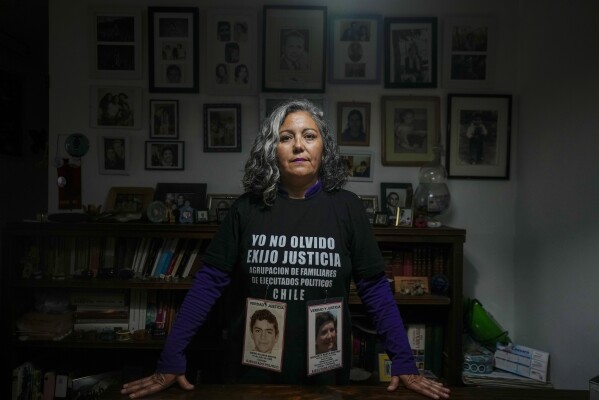
Yorka Salinas poses for a portrait wearing photos of her 18-year-old brother Isidro Salina and mother Margarita Martin, both who were murdered in 1986, that reads in Spanish “I don’t forget. I demand justice,” in Santiago, Chile, Wednesday, Sept. 6, 2023. The National Commission for Truth and Reconciliation consider her brother, mother and aunt María Martin to have been executed by the Carabineros national police, and consider their deaths violations of human rights under the responsibility of state agents during Gen. Augusto Pinochet’s dictatorship. (AP Photo/Esteban Felix)
___
Follow AP’s coverage of Latin America and the Caribbean at https://apnews.com/hub/latin-america
Yelena Monroy poses for portrait by photos of detainees who disappeared during the dictatorship Gen. Augusto Pinochet in La Serena, Chile, Friday, Sept. 1, 2023. Monroy was 3-years-old when she was imprisoned for more than a year along with her younger sister Natacha and her mother Eliana Rodriguez, a socialist activist persecuted by the regime Pinochet, who was brought to power in Chile after a military coup in September 1973. (AP Photo/Esteban Felix)
BY EVA VERGARA
September 8, 2023
SANTIAGO, Chile (AP) — Yelena Monroy was 3 years old when she was imprisoned for more than a year along with her younger sister and her mother, a socialist activist targeted by the regime of Gen. Augusto Pinochet after he came to power in Chile in a military coup in September 1973.
“We were scared, we were crying,” recalled Monroy, now a 53-year-old commercial engineer and one of more than 1,000 children and adolescents who were detained in the name of fighting communism and leftist guerrillas during Chile’s military dictatorship from 1973 to 1990.
Eliana Rodriguez adjusts her glasses as her daughter Yelena Monroy searches through a photo album at Rodriguez’s home in La Serena, Chile, Friday, Sept. 1, 2023. Rodriguez and her two young daughters were imprisoned during the dictatorship of Gen. Augusto Pinochet, who was brought to power in Chile after a military coup in September 1973. (AP Photo/Esteban Felix)
Photographed through a plastic window, an entrance leads to the center of “El Buen Pastor,” or The Good Shepherd, originally built to hold detained, female minors and run by Catholic nuns, that was turned into a detention center for political prisoners during the dictatorship of Gen. Augusto Pinochet, in La Serena, Chile, Friday, Sept. 1, 2023. Yelena Monroy was incarcerated here for more than a year when she was only three-years-old with her mother Eliana Rodriguez and younger sister Natacha. (AP Photo/Esteban Felix)
Yelena Monroy shows a 1973 photograph of her mother Eliana Rodriguez, bottom left, sitting with other political prisoners during the dictatorship of Gen. Augusto Pinochet at “El Buen Pastor” or The Good Shepherd detention center, originally built to hold detained, female minors and run by Catholic nuns that was turned into a detention center for political prisoners during Gen. Augusto Pinochet’s dictatorship, in La Serena, Chile, Friday, Sept. 1, 2023. Monroy was incarcerated here with her mother and younger sister for more than a year. The 1973 photo is from a visit by the International Red Cross to verify detainees’ condition. (AP Photo/Esteban Felix)
When Pinochet installed himself as leader, the age of majority in Chile was set at 21 years. But being a minor was no protection from the dictatorship’s crackdown. Children were detained, tortured, killed, and even used as decoys to apprehend their parents.
The trauma of that period has made many of the young victims of the military regime reluctant to speak out, and the process of prosecuting that era’s crimes and making reparations generally has made no distinction among victims based on age. So, the child victims of the Pinochet era have not had much visibility, though minors represent nearly 10% of the deaths attributed to the regime.
OTHER NEWS
Chile president defends democracy 50 years after coup ushered in brutal military dictatorship
The Catholic Church defended human rights during Chile’s dictatorship. An archive tells the story
Movie Review: Pinochet as a vampire in surreal, frightening ‘El Conde’
“We don’t classify them by age, because they all suffered,” Gaby Rivera, president of Chile’s Association of Relatives of the Detained-Disappeared, told The Associated Press.
However, the National Commission on Political Imprisonment and Torture figures show that the Pinochet regime detained 1,132 minors under the age of 18. Of these 88 were under 13 and 102 were arrested along with their parents — or were born in prison.
Some 307 children under the age of 18 were killed during that period, according to human rights groups’ reviews of documentation from the National Truth and Reconciliation Commission. About 3,200 people overall were killed during the dictatorship, or went missing and are believed dead.
Chile’s National Stadium, in the country’s capital, became the largest detention center of the military government. That is where they arrested — and beat — Roberto Vásquez Llantén, when he was 17, for being an active militant of the Revolutionary Left Movement.
Roberto Vásquez Llantén, 67, poses for a portrait on the stairs that leads to a tunnel at the National Stadium where he was held during the dictatorship in Santiago, Chile, Saturday, Sept. 2, 2023. (AP Photo/Esteban Felix)
View of the women´s dressing room of the National Stadium, which was used as a prison and place of torture during the coup orchestrated by Gen. Augusto Pinochet, Santiago, Chile, Saturday, Sept. 2, 2023. (AP Photo/Esteban Felix)
He had been in hiding since the start of the coup, but was arrested on Jan. 15, 1974. Vásquez Llantén, who is 67 today, spent a year in the Chacabuco Prison Camp in the Atacama desert along with 16 other minors. There was no electricity or hot water, he recalled. There were antipersonnel mines outside the barbed-wire to keep prisoners in line, while guards kept watch from towers.
If minors had political significance, they were detained just like adults. But they also were used as lures to trap and detain their parents.
The Fernández Montenegro sisters were imprisoned in February 1974 when they were teenagers.
Viviana, 14, and Morelia, 17, were accused of being guerrillas in the Chilean port of Valparaíso where they lived, some 120 kilometers (75 miles) northwest of the capital. Their mother was arrested and released after 24 hours. The whole family, with the exception of the father, were active communists.
The sisters were first held together in the Silva Palma Navy Barracks, on one of the many inhabited hills of Valparaíso.
“I was in a cell, wearing a hoodie, while some guys put electricity cables on my fingers, yelling and screaming profanities and threats,” demanding to know where the weapons were, Viviana Fernández recounted.
“The only thing I did was cry and cry ... I felt very afraid, very afraid,” she said.
Fernández, who is 64 today, and Yelena Monroy are members of the Association of Former Minors Victims of Political Imprisonment and Torture, created nine years ago in part to raise awareness about the fate of children and adolescents under the dictatorship.
Fernández, who is the spokesperson, says the organization has about 100 members, but she thinks there are many more, and that many are still afraid to talk about what happened to them during those years.
Many other minors of that time did not survive to tell their story.
Cecilia Aguilar is reflected in the mirror at home where a photo of her with her then 6-year-old sister Alicia stands in Santiago, Chile, Wednesday, Sept. 6, 2023. Her sister was assassinated on Sept. 18, 1973, the day their portrait was taken, by soldiers who arrived shooting into a public square in the Yungay neighborhood where they played during Gen. Augusto Pinochet’s dictatorship. Cecilia said she was saved because she ran, but later was found by a soldier who applied “the escape law,” telling her to run as he counted to 30. “If I catch you, I’ll shoot you and kill you,” she recalled him saying. (AP Photo/Esteban Felix)
Cecilia Aguilar holds a photo of herself with her then 6-year-old sister Alicia in Santiago, Chile, Wednesday, Sept. 6, 2023. Cecilia’s sister was assassinated on Sept. 18, 1973, the day their portrait was taken, by soldiers who arrived shooting into a public square in the Yungay neighborhood where they played, during Gen. Augusto Pinochet’s dictatorship. Cecilia said she was saved because she ran, but later was found by a soldier who applied “the escape law,” telling her to run as he counted to 30. “If I catch you, I’ll shoot you and kill you,” she recalled him saying. (AP Photo/Esteban Felix)
José Gregorio Saavedra González, a militant of the Revolutionary Left Movement, was executed at the age of 18 by soldiers in Calama, in the north of the country, together with 25 other political prisoners on Oct. 19, 1973. He was one of the disappeared who years later were located — and identified.
“They gave us a little bit of a finger in a small box, and a little bit of what I imagine was a small tooth,” recalls his sister, Ángela Saavedra, who is 81.
Monroy and Fernández fault the Chilean government for not fully acknowledging past violations of children’s human rights.
“We have been totally forgotten by the state, it is very much in debt,” Fernández said.
Yorka Salinas poses for a portrait wearing photos of her 18-year-old brother Isidro Salina and mother Margarita Martin, both who were murdered in 1986, that reads in Spanish “I don’t forget. I demand justice,” in Santiago, Chile, Wednesday, Sept. 6, 2023. The National Commission for Truth and Reconciliation consider her brother, mother and aunt María Martin to have been executed by the Carabineros national police, and consider their deaths violations of human rights under the responsibility of state agents during Gen. Augusto Pinochet’s dictatorship. (AP Photo/Esteban Felix)
___
Follow AP’s coverage of Latin America and the Caribbean at https://apnews.com/hub/latin-america




No comments:
Post a Comment